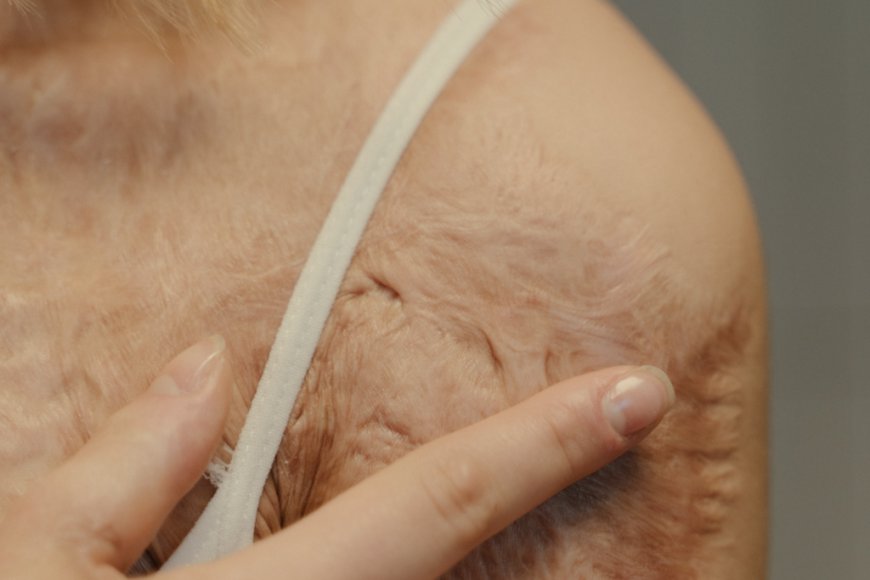Beyond the Flames: The Evolving Techniques in Plastic Surgery for Burns

Burn injuries can leave not only physical scars but also emotional and psychological challenges for those affected. With advancements in medicine and technology, the field of plastic surgery for the effects of burns(عملية تجميل آثار الحروق) has made significant strides. This blog explores the evolving techniques in plastic surgery that aid in the recovery and rehabilitation of burn victims, highlighting the importance of personalized treatment approaches, innovative surgical techniques, and ongoing support for those on their healing journey.
Understanding Burn Injuries
Burn injuries are classified into different categories based on their severity and depth:
Classification of Burns
- First-Degree Burns: Affect only the outer layer of skin, causing redness and minor pain.
- Second-Degree Burns: Involve deeper layers of skin, leading to blisters and swelling.
- Third-Degree Burns: Extend through the skin to underlying tissues, often resulting in severe damage and loss of sensation.
- Fourth-Degree Burns: Affect deeper structures, including muscles and bones, and require extensive medical intervention.
Understanding the classification of burns is crucial as it influences treatment decisions and surgical approaches.
Emotional and Psychological Impact
Burns can have profound psychological effects, including:
- Post-Traumatic Stress Disorder (PTSD): Survivors may experience flashbacks, anxiety, or depression.
- Body Image Issues: Visible scars can lead to self-esteem problems.
- Social Isolation: Fear of judgment may cause individuals to withdraw from social situations.
Recognizing these emotional impacts is essential for providing comprehensive care that addresses both physical and psychological needs.
The Role of Plastic Surgery
Plastic surgery for the effects of burns plays a pivotal role in the recovery process. It not only focuses on physical healing but also enhances the quality of life for burn survivors.
Goals of Plastic Surgery
- Restoration of Function: Surgical interventions can help restore mobility and functionality in affected areas.
- Aesthetic Improvements: Reconstructive techniques aim to improve the appearance of scars and skin integrity.
- Psychological Healing: Enhanced self-image and confidence can lead to better emotional well-being.
By setting clear goals, plastic surgeons can tailor treatments to meet the unique needs of each patient.
Evolving Surgical Techniques
Recent advancements in surgical techniques have transformed the landscape of plastic surgery for the effects of burns. Here are some key innovations:
1. Skin Grafting
Skin grafting involves transplanting healthy skin from one area of the body to cover the burned area.
Types of Skin Grafts
- Split-Thickness Grafts: Include the outer layer and part of the underlying layer, commonly used for larger burn areas.
- Full-Thickness Grafts: Involve the entire thickness of the skin, used for more severe burns where aesthetic appearance is a priority.
Skin grafting is essential for promoting healing and minimizing scarring, making it a cornerstone of burn reconstruction.
2. Tissue Expansion
Tissue expansion is a technique that allows for the creation of additional skin.
Process of Tissue Expansion
- Placement of Expanders: A balloon-like device is inserted beneath the skin near the burn site.
- Gradual Expansion: Saline is gradually injected into the expander, stretching the skin over time.
- Surgical Closure: Once sufficient skin is generated, the expander is removed, and the newly created skin is used to cover the burn area.
This technique is particularly useful for larger burns where skin availability is limited.
3. Laser Therapy
Laser therapy has become increasingly popular in managing burn scars.
Benefits of Laser Therapy
- Reduction of Scarring: Lasers can improve the texture and appearance of scars.
- Pain Relief: Laser treatments can alleviate discomfort associated with scar tissue.
- Non-Invasive Option: This method requires minimal downtime compared to traditional surgeries.
Incorporating laser therapy into treatment plans offers patients an effective and less invasive option for managing burn scars.
4. Biologic Dressings
Biologic dressings are made from human or animal tissue and are applied to burn wounds.
Advantages of Biologic Dressings
- Promotes Healing: These dressings provide a conducive environment for wound healing.
- Reduced Infection Risk: They help protect the wound from infection during the healing process.
- Enhanced Comfort: Biologic dressings can reduce pain and discomfort for burn patients.
The use of biologic dressings exemplifies the shift towards utilizing natural materials in burn care.
Rehabilitation and Post-Surgical Care
Rehabilitation is a crucial aspect of the recovery process following plastic surgery for the effects of burns.
Importance of Rehabilitation
- Physical Therapy: Aids in restoring mobility and strength in affected areas.
- Occupational Therapy: Helps individuals adapt to daily activities and regain independence.
- Psychological Support: Counseling services can assist with the emotional challenges of recovery.
A multidisciplinary approach ensures that burn survivors receive comprehensive care that addresses all facets of their healing journey.
The Future of Burn Care
As research and technology continue to evolve, the future of plastic surgery for the effects of burns holds great promise.
Innovations on the Horizon
- Stem Cell Therapy: Research is exploring the use of stem cells to enhance skin regeneration and repair.
- 3D Printing: Advances in 3D printing technology could allow for the creation of customized skin grafts and prosthetics.
- Telemedicine: Virtual consultations and follow-ups can improve access to care for burn survivors, particularly in remote areas.
These innovations could revolutionize burn treatment, making recovery more effective and accessible.
Conclusion
Plastic surgery for the effects of burns has come a long way, driven by advancements in surgical techniques and a deeper understanding of patient needs. By focusing on individualized treatment plans that address both physical and emotional aspects of recovery, the field continues to evolve. As we look to the future, ongoing research and technological innovations hold the potential to further improve outcomes for burn survivors.
Emphasizing the importance of comprehensive care, we can help individuals move beyond their injuries and reclaim their lives with confidence and resilience. The journey may be challenging, but with the right support and treatment, healing is not just possible; it is within reach.
